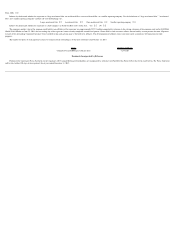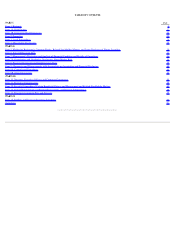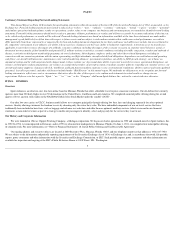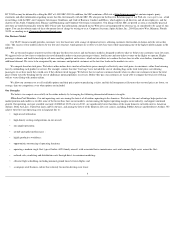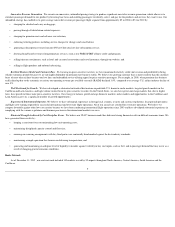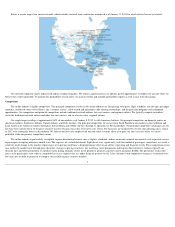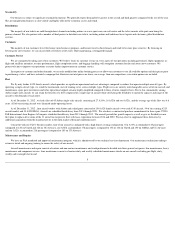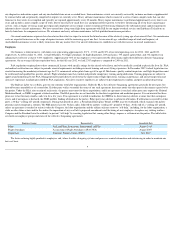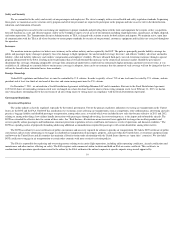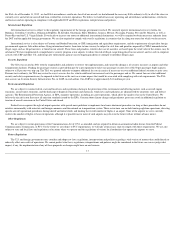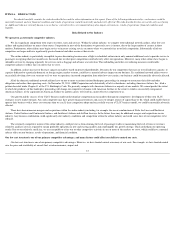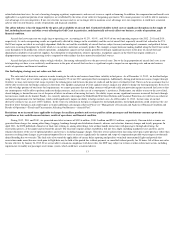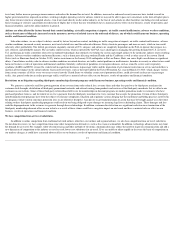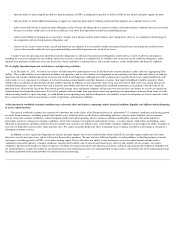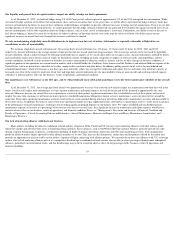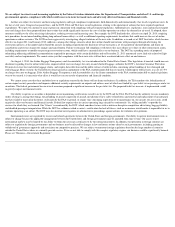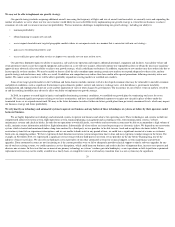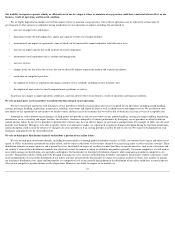Spirit Airlines 2012 Annual Report Download - page 13
Download and view the complete annual report
Please find page 13 of the 2012 Spirit Airlines annual report below. You can navigate through the pages in the report by either clicking on the pages listed below, or by using the keyword search tool below to find specific information within the annual report.
ITEM 1A. RISK FACTORS
You should carefully consider the risks described below and the other information in this report. If any of the following risks materialize, our business could be
materially harmed, and our financial condition and results of operations could be materially and adversely affected. The risks described below are not the only ones facing
us. Additional risks not currently known to us or that we currently believe are immaterial may also impair our business, results of operations, financial condition and
liquidity.
Risks Related to Our Industry
We operate in an extremely competitive industry.
We face significant competition with respect to routes, fares and services. Within the airline industry, we compete with traditional network airlines, other low-cost
airlines and regional airlines on many of our routes. Competition in most of the destinations we presently serve is intense, due to the large number of carriers in those
markets. Furthermore, other airlines may begin service or increase existing service on routes where we currently face no or little competition. Substantially all of our
competitors are larger and have significantly greater financial and other resources than we do.
The airline industry is particularly susceptible to price discounting because once a flight is scheduled, airlines incur only nominal additional costs to provide service to
passengers occupying otherwise unsold seats. Increased fare or other price competition could adversely affect our operations. Moreover, many other airlines have begun to
unbundle services by charging separately for services such as baggage and advance seat selection. This unbundling and other cost reducing measures could enable
competitor airlines to reduce fares on routes that we serve.
In addition, airlines increase or decrease capacity in markets based on perceived profitability. Decisions by our competitors that increase overall industry capacity, or
capacity dedicated to a particular domestic or foreign region, market or route, could have a material adverse impact on our business. If a traditional network airline were to
successfully develop a low-cost structure or if we were to experience increased competition from other low-
cost carriers, our business could be materially adversely affected.
All of the domestic traditional network airlines have on one or more occasions initiated bankruptcy proceedings in attempts to restructure their debt and other
obligations and reduce their operating costs. On November 29, 2011, AMR Corporation and substantially all of its subsidiaries, including American Airlines, Inc., filed a
petition for relief under Chapter 11 of the U.S. Bankruptcy Code. We presently compete with American Airlines in a majority of our markets. We cannot predict the extent
to which the pendency of this bankruptcy proceeding will change our competitive dynamic with American Airlines or the extent to which a successfully reorganized
American Airlines, or the acquisition of American Airlines by another carrier, will result in a more effective competitor to us.
Our growth and the success of our ULCC business model could stimulate competition in our markets through our competitors’ development of their own ULCC
strategies or new market entrants. Any such competitor may have greater financial resources and access to cheaper sources of capital than we do, which could enable them to
operate their business with a lower cost structure than we can. If these competitors adopt and successfully execute a ULCC business model, we could be materially adversely
affected.
There have been numerous mergers and acquisitions within the airline industry including, for example, the recent combinations of Delta Air Lines and Northwest
Airlines, United Airlines and Continental Airlines, and Southwest Airlines and AirTran Airways. In the future, there may be additional mergers and acquisitions in our
industry. Any business combination could significantly alter industry conditions and competition within the airline industry and could cause fares of our competitors to be
reduced.
The extremely competitive nature of the airline industry could prevent us from attaining the level of passenger traffic or maintaining the level of fares or revenues
related to ancillary services required to sustain profitable operations in new and existing markets and could impede our growth strategy, which could harm our operating
results. Due to our relatively small size, we are susceptible to a fare war or other competitive activities in one or more of the markets we serve, which could have a material
adverse effect on our business, results of operations, and financial condition.
Our low cost structure is one of our primary competitive advantages, and many factors could affect our ability to control our costs.
Our low cost structure is one of our primary competitive advantages. However, we have limited control over many of our costs. For example, we have limited control
over the price and availability of aircraft fuel, aviation insurance, airport and
12


